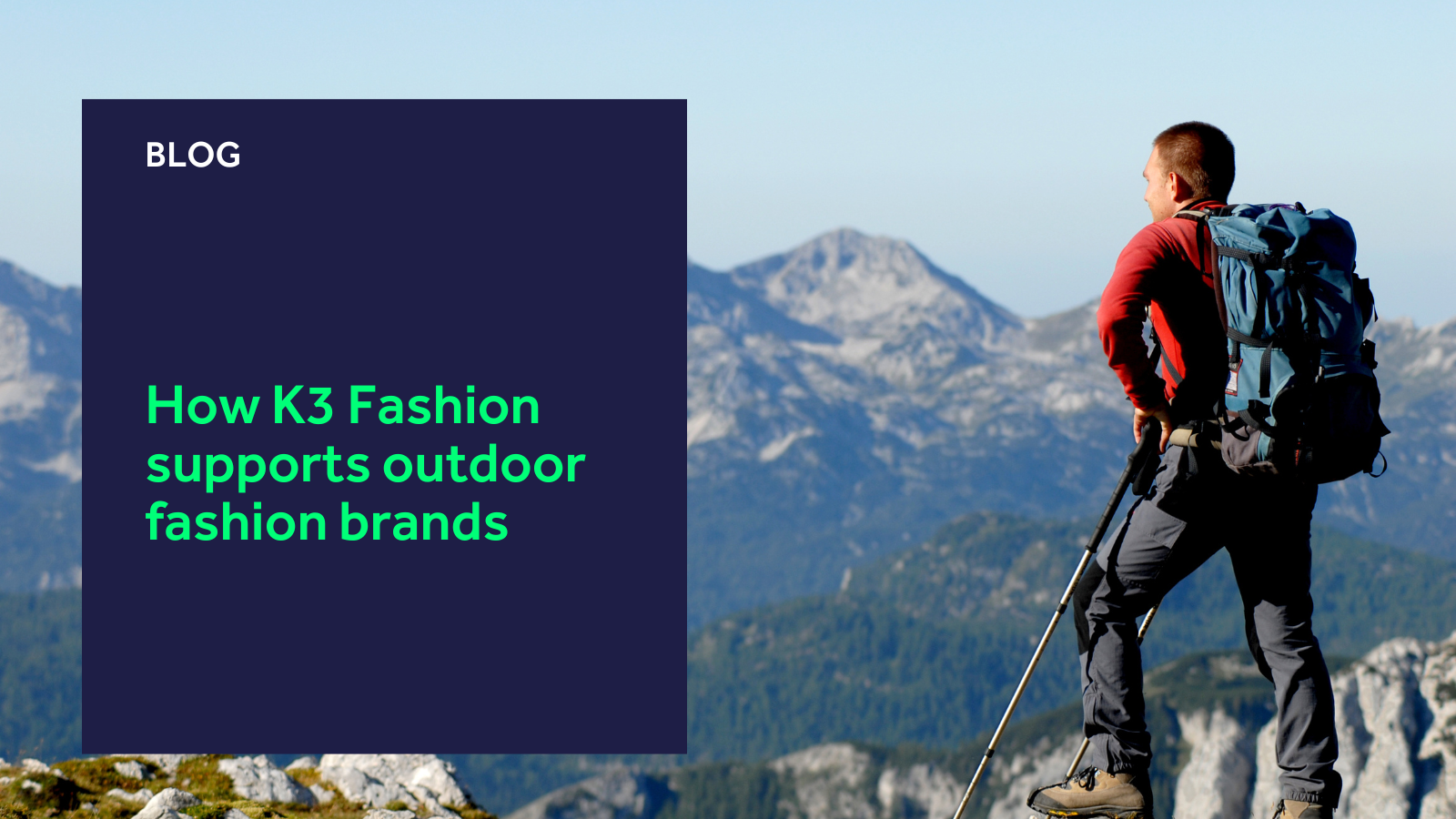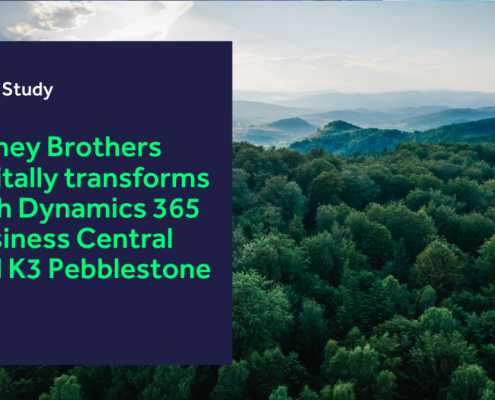The fashion industry has many facets with various sub-industries, such as outdoor and luxury, that each have a specific set of needs and challenges that must be resolved.
But why are some sub-industries, like outdoor fashion, more complex and challenging than others?
Technical limitations and raw material scarcity
Often, the differences between fashion brands result from a market need. In the case of outdoor fashion, brands have the same system solution requirements as other fashion businesses, but their processes are notably different. This is because outdoor clothing needs to be highly functional and durable in various weather conditions, which means a high focus on raw materials and material constructions is required to ensure that the finished articles are up to standard.
Since outdoor brands operate in a complicated environment with complex products and limited availability of selected raw materials, alongside high expectations from consumers concerning functionality, quality, and sustainability, the solutions they require must match and cope with the high standards of how outdoor brands compose and control their materials and end-products.
This issue is made more pressing by the fact that outdoor goods typically command higher sales prices to account for the scarcity of the raw materials needed to manufacture them. Resultantly, the goods need to be of high quality to justify the higher price tag.
However, the most significant difference between outdoor and traditional fashion brands lies in how the former operates in wholesale. Sales are typically driven and limited based on product and material availability since the raw materials are scarce and more challenging to work with, meaning outdoor brands have much longer lead times than traditional brands.
Key differences in seasonal follow-up
Due to the limited availability of raw materials, outdoor brands often sell what they can deliver on a particular date and push subsequent sales orders (after re-ordering from factories) into a later delivery drop. Despite only running two main seasons in multiple deliveries, the follow-up process is far more complex than it is for traditional fashion brands.
For the uninitiated, seasonal follow-up refers to developers and buyers contacting suppliers and factories to keep up with their raw material sourcing, delivery dates, and other transactions. In most cases, outdoor brands do not own their materials, but they still want to remain in control of them. In instances where fashion brands take back control over raw materials (without owning them), there is another notable difference between outdoor and traditional brands, as the former often purchases materials more than a year before they’re needed due to their unique requirements.
Usually, traditional brands run multiple seasons (such as four, six, or even twelve) while having special collections for holidays like Easter or Halloween. Yet, their seasonal follow-up is less complex than outdoor brands, as their complexity mainly lies in handling more product volume rather than being burdened by technical limitations and raw material scarcity.
Outdoor brands also offer their collections much earlier to their customers and continue to sell them for months afterwards. In contrast, other fashion brands only sell their collections for four to six weeks before closing or stopping their presales period. The goods will then be delivered in batches, typically once per month, four to six times yearly. Once again, the complexity for fast fashion brands lies in the sheer volume of goods rather than technical limitations or raw material scarcity.
To complicate matters further, outdoor brands operate differently in the sense that their clients are accustomed to being able to change their orders to add different items and colours retroactively, which is less common in other fashion verticals. Some outdoor customers – like the most important ones – can even order much later than other clients but still receive the goods early.
This inevitably impacts sales orders from other customers but is necessary due to how significant the important parties are to the outdoor brands’ profit margins, meaning that they will always have priority when raw materials are particularly scarce. Conversely, fast fashion brands have access to abundant materials and can more easily fulfil orders for their smaller customers. Naturally, this presents another challenge for outdoor brands since their customer and supplier orders constantly change.
How K3 Fashion supports outdoor brands
Our K3 Fashion solution, embedded in Microsoft Dynamics 365 Finance, Supply Chain Management, and Commerce, has been explicitly enhanced for businesses operating in the fashion industry, including outdoor brands.
K3 Fashion taps into the standard functionality of Dynamics 365 Finance, Supply Chain Management, and Commerce to ensure that outdoor brands can also leverage features that resolve many of their key challenges and then takes it further by providing enhanced functionality for the remainder of their requirements.
This is particularly important as most outdoor brands still require the same functionality as other fashion businesses, such as seasonality, matrix layouts, and compositions, alongside our added features to solve their unique challenges.
Crucially, outdoor brands must work with Product Lifecycle Management (PLM) solutions to ensure the longevity and durability of their products. K3 Fashion and Dynamics 365 Finance, Supply Chain Management, and Commerce provide this mission-critical functionality while offering additional support for wholesale scenarios and channel management.
Most outdoor brands still operate in a wholesale-driven environment, where their own retail stores and online sales are a smaller part of their operations.
With K3 Fashion, outdoor brands can utilise the solution’s functionality to support their entire business. K3 Fashion enables them to plan for their wholesale, retail, and online businesses separately (i.e., in silos), ensuring they can separate stock per each business channel. At the same time, K3 Fashion only siloes the stock systemically, meaning the stock in the warehouse is available across all channels.
Additionally, K3 Fashion has ringfencing functionality to ensure that certain products or product quantities can be secured for special customers or groups (e.g., buying groups). The ringfencing feature can also be utilised to ensure goods are only made available for specific customers, supporting special programmes with customers.
Finally, K3 Fashion’s channel management and prioritisation functionality enables outdoor brands to efficiently deal with key customers’ eCommerce platforms and retail stores while also keeping stock available for important clients across their individual channels. This further ensures that key customers, stores, and platforms always receive their goods when needed.
If you’d like to learn more about K3 Fashion, feel free to drop us a line today to find out more.
 https://www.k3btg.com/wp-content/uploads/2023/10/Do-more-with-less-blog-header-v2.png
900
1600
Jordan Heal
https://www.k3btg.com/wp-content/uploads/2022/03/K3_Master_Colour_RGB.svg
Jordan Heal2023-10-18 10:21:552025-02-21 14:47:51Do more with less: Using technology as a deflationary force in an inflationary economy
https://www.k3btg.com/wp-content/uploads/2023/10/Do-more-with-less-blog-header-v2.png
900
1600
Jordan Heal
https://www.k3btg.com/wp-content/uploads/2022/03/K3_Master_Colour_RGB.svg
Jordan Heal2023-10-18 10:21:552025-02-21 14:47:51Do more with less: Using technology as a deflationary force in an inflationary economy

